WHAT IS FOREX TRADING
Understanding What Is Forex Trading and How Does It Work
Is a Prerequisite for All Forex Traders.
Foreign Exchange Market
What is Foreign Exchange Market?
The Foreign Exchange Market which is also known as Forex, FX or the currency market is a global online network where participants can exchange, buy and sell currencies as well as speculate on the exchange rate of different currency pairs. Thanks to its numerous and active “members” such as banks and central banks, companies, forex dealers, hedge-funds, forex traders and investors and their daily activity, the Forex market place is actually shaping the exchange rates of currencies on a global level.
Not only does the Foreign Exchange Market provide a venue for buying, selling, exchanging currencies etc. it basically allows companies from around the world to actually conduct their business (international trading and investing without it would not be possible). The FX market is incorporated into our daily lives and affects even the “smallest” of individuals. Imagine you are about to travel to another country, one of the first things you would need to do is exchange your local currency for the currency used at your destination via bank or an exchange point.
How does Foreign Exchange Market work?
Forex markets do not have a physical location, as currency trading is done online – via computer networks between participants / traders around the world. In addition, trading is not done on one main centralized exchange but it is conducted electronically over-the-counter (OTC). Most of the foreign exchange transactions are made over OTC by banks and on behalf of their clients.
Some of the biggest OTC trading centers are in London, New York, Tokyo, Singapore, Sydney, Paris etc. As these centers are covering almost all time zones around the world, the forex market is open 24 hours – 5 days a week (from Monday morning in Wellington, New Zealand to 5pm ET on Friday in New York).. Hence, when a trading day in the U.S. ends, Tokyo and Hong Kong are just starting their forex trading day. Therefore, the forex market can be extremely active throughout the day with prices and currency rations changing constantly. An interesting fact is that, as of April 2019, London is actually dominating the FX market with more than 40% of the global Forex trading being conducted there.

Today, the Forex market is by far the biggest financial market when it comes to trading volumes, as its daily turnover is estimated to more than 6.6 trillion U.S. dollars. This, along with the 24h/5d operation fact is also making it highly liquid which is making it highly appealing for currency traders / investors.
What is Forex Trading (Currency Trading)?
Forex Trading or in other words Currency Trading represents the act of exchanging one currency for another at a specific price/rate which was agreed between the trading parties. These parties may be banks, central banks, companies / corporations, exchange offices, hedge-funds, speculators and of course, the individual traders.
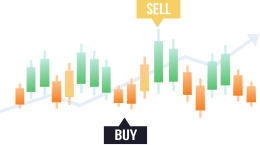
Before the expansion of internet and global networking, currency trading was actually a privilege of large multinational corporations, hedge-funds and high-net-worth individuals, as it required a lot of capital. However, with its development the retail market adapted to individual traders’ needs was born. It enabled easier access to the FX market through banks and brokers who are also offering specific trading conditions such as leverage which gives individual traders the opportunity to control a large trading position with a small balance deposited to the trading account. Today, individual traders can easily access the FX market from their phones, tablets or other devices and complete trades on the go.
How Does Currency Trading Work?
Each currency has its own unique code which consists of three letters, where the first two are referring to the country/region where the particular currency resides while the third one stands for the name of the currency. For instance, the pair GBP/USD stands for Great British Pound / United States Dollar. This is the universal coding.
Currencies are always trader in pairs, where one currency is base currency and the other is quote currency. When trading, the value of one currency is always observed in relation to the value of the other currency in the pair. Basically, this relation determines what amount of quote currency can be bought with 1 unit of the base currency. For instance, if we are looking into a currency pair of GBP/USD at the current exchange rate 1 GBP can buy 1.3870 US dollars.
Making profit with currency trading
The ultimate goal of currency trading is making profit by successfully identifying or predicting the market direction for a particular currency pair. Trader is making profits either when he bought the financial instrument low and closed the position (sold) it high, or by opening a position by selling high and closing it lower. For instance, in our given GBP/USD example, if the pound rises against the dollar, that means that 1 GDP will be worth more dollars, hence the currency pair’s price will increase and vice versa. Therefore, if you believe that the base currency price will strengthen against the quote price, you should buy (going long), but if you predict otherwise you should sell the pair (going short).
However, prior to being able to perform any trades, individual traders need to open a trading account on one of the trading platforms. As there are many platforms for currency trading available on the market, we have established a list and reviewed some of the top trading platforms for our users’ convenience.
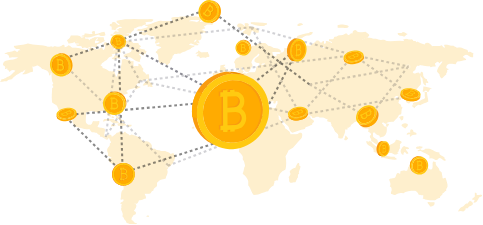
Currency Pairs
There are three main types of currency pairs: major, minor and exotic pairs. Whether a pair is going to belong to one of the three groups depends solely on the currency which is included in the pair.

Major Currency Pairs
The major pairs are the most heavily traded currency pairs and they are considered the drivers of the Forex market. For comparison, these pairs are what Apple or Amazon are for the stock market and with their popularity also goes the highest liquidity. Every pair that falls under this category includes the US dollar, hence if you ever see a pair that does not involve the US dollar, it is not a major currency pair.
| Currency Pair | Countries | Currency Name |
|---|---|---|
| EUR/USD | Eurozone / United States | Euro / US dollar |
| USD/JPY | United States / Japan | US dollar / Japanese yen |
| GBP/USD | United Kingdom / United States | British pound (sterling) / US dollar |
| USD/CHF | United States / Switzerland | US dollar / Swiss franc |
| USD/CAD | United States / Canada | US dollar / Canadian dollar |
| AUD/USD | Australia / United States | Australia dollar / US dollar |
| NZD/USD | New Zealand / United States | New Zealand dollar / US dollar |
Eight currencies that are presented in the major currency pairs table are actually also the most traded currencies on the FX market.
EURO
Official Currency of Eurozone
Symbol €
Code: EUR
AUSTRALIAN DOLLAR
Official Currency of Australia
Symbol $
Code: AUD
US DOLLAR
Official Currency of United States
Symbol $
Code: USD
CANADIAN DOLLAR
Official Currency of Canada
Symbol $
Code: CAD
JAPANESE YEN
Official Currency of Japan
Symbol ¥
Code: JPY
NEW ZEALAND DOLLAR
Official Currency of New Zealand
Symbol $
Code: NZD
BRITISH POUND
Official Currency of UK
Symbol £
Code: GBP
SWISS FRANC
Official Currency of Switzerland
Symbol Fr, CHf, SFr
Code: CHF
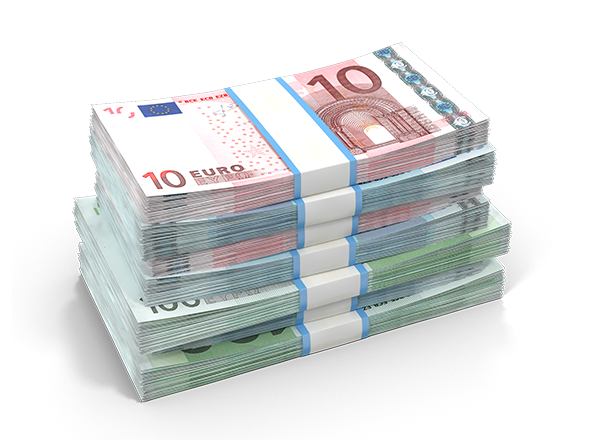
Minor Currency Pairs
| Currency Pair | Countries | Currency Name |
|---|---|---|
| EUR/GBP | Eurozone / United Kingdom | Euro / British pound (sterling) |
| EUR/AUD | Eurozone / Australia | Euro / Australian dollar |
| EUR/NZD | Eurozone / New Zealand | Euro / New Zealand dollar |
| EUR/CAD | Eurozone / Canada | Euro / Canadian dollar |
| EUR/CHF | Eurozone / Switzerland | Euro / Swiss franc |
| EUR/JPY | Eurozone / Japan | Euro / Japanese yen |
| GBP/JPY | United Kingdom / Japan | British pound (sterling) / Japanese yen |
| AUD/JPY | Australia / Japan | Australian dollar / Japanese yen |
| NZD/JPY | New Zealand / Japan | New Zealand dollar / Japanese yen |
| CAD/JPY | Canada / Japan | Canadian dollar / Japanese yen |
| CHF/JPY | Switzerland / Japan | Swiss franc / Japanese yen |
| GBP/AUD | United Kingdom / Australia | British pound (sterling) / Australian dollar |
| GBP/CAD | United Kingdom / Canada | British pound (sterling) / Canadian dollar |
| GBP/CHF | United Kingdom / Switzerland | British pound (sterling) / Swiss franc |
| GBP/AUD | United Kingdom / New Zealand | British pound (sterling) / New Zealand dollar |
| GBP/CAD | United Kingdom / Canada | British pound (sterling) / Canadian dollar |
| GBP/CHF | United Kingdom / Switzerland | British pound (sterling) / Swiss franc |
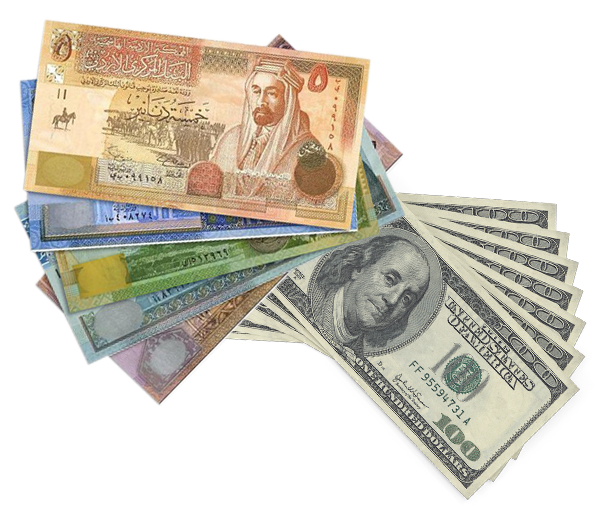
Exotic Currency Pairs
These pairs are the least traded, hence far less liquid than major or minor pairs. Even though their liquidity is more than enough to absorb the majority of orders, its flow can be rather discontinuous. Exotic currency pairs include one of the major currencies and a currency of a developing country/economy. In addition, these pairs may also be less popular due to the fact that for trading those pairs, traders cannot rely on the technical too much as it requires higher liquidity.
These are some of the currencies that my form an exotic pair along with the major currency next to them:
| Abbreviation | Country | Abbreviation | Country |
|---|---|---|---|
| AED | UAE Dirham | ARS | Argentinean Peso |
| AFN | Afghanistan Afghani | GEL | Georgian Lari |
| MYR | Malaysian Ringgit | AMD | Armenian Dram |
| GYD | Guyanese Dollar | MZN | Mozambique new Metical |
| AWG | Aruban Florin | IDR | Indonesian Rupiah |
| OMR | Omani Rial | AZN | Azerbaijan New Manat |
| IQD | Iraqi Dinar | QAR | Qatari Rial |
| BHD | Bahraini Dinar | IRR | Iranian Rial |
| SLL | Sierra Leone Leone | BWP | Botswana Pula |
| JOD | Jordanian Dinar | TJS | Tajikistani Somoni |
| BYR | Belarusian Ruble | KGS | Kyrgyzstanian Som |
| TMT | Turkmenistan new Manat | CDF | Congolese Franc |
| LBP | Lebanese Pound | TZS | Tanzanian Schilling |
| DZD | Algerian Dinar | LRD | Liberian Dollar |
| UZS | Uzbekistan Som | EGP | Egyptian Pound |
| MAD | Moroccan Dirham | WST | Samoan Tala |
| MWK | Malawi Kwacha | ETB | Ethiopian Birr |
| THB | Thai Baht | TRY | New Turkish Lira |
The Fundamentals of Currency Trading
Why is Currency Trading so Popular?
As previously mentioned, currency trading has become extremely popular in the recent decade given that it is far more accessible and transactions can easily be done via smartphones, tablets and other devices. In addition, the exchange market is characterized by high liquidity and feasible working hours (24/5), What is more to it, it is not likely that the traders will experience price manipulation which is present in trading other assets such as cryptocurrencies.
Besides these reasons, in their search for a secondary source of income or a complete financial freedom, traders are looking into forex because of its unbelievable daily turnovers, as well as the availability of leverage which is enabling them to significantly increase their winnings/profit if their transaction is successful.
The basic steps to Currency Trading
Choosing the Right Forex Broker
Prior to making their first trading transaction on the foreign exchange, traders will have to go through a couple of general steps. Namely, they will have to open a trading account with a broker of their choice to actually be able to trade via a particular trading platform. This seemingly easy pathway includes 3-fold decision making which is by no means easy. Simply put, the FX market is swamped with hundreds of forex brokers all trying to outshine and outplay the competition with their offers, trading conditions, variety of trading accounts, promoting different trading platforms etc.; And in this sea of choices, traders need to make the best decision for themselves.
With the aim to facilitate this process, we have conducted a thorough research of the Top Forex Brokers where you can easily find all the necessary information and cross-compare the brokers. In addition, our trading experts have laid out a full-scale research on The Best Trading Platforms, as well as Trading Account Types which could be used for proper reference.
Choosing the Right Forex Broker
- Day Trading
- Day Trading
- Scalping Trading
- Position Trading
- Swing Trading
- Carry Trading
- Range Trading
- Trend Trading
Forex Trading Hours
Forex Market Locations and Trading Hours
Foreign Exchange Market operates 24h/five-days-a-week. The most common trading hours are 8am to 5pm looked at from the local market perspective, but of course this may differ from market to market and traders need to be extra careful when trading and switching between markets in order to properly close their positions before the local market closes, if this is the way they are trading.
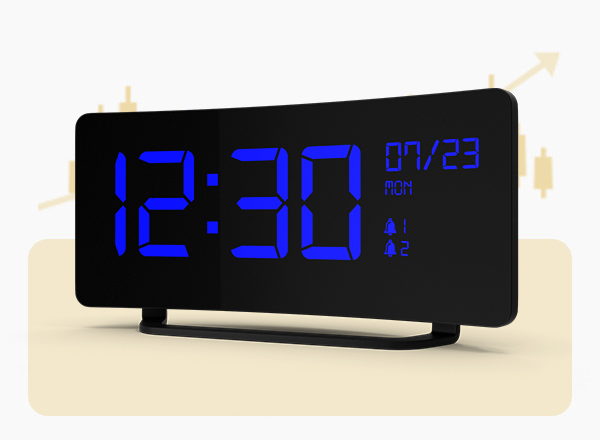
Oceania - Asian Forex Session
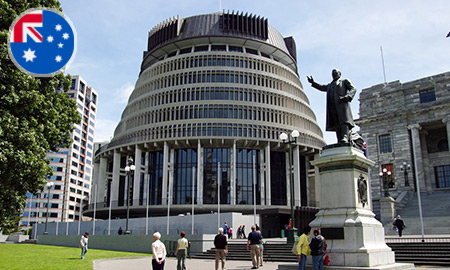
Wellington, New Zeland
FX Trading Hours 08:00-17:00 UTC +12(+13)
Sydney, Australia
FX Trading Hours 08:00-17:00 UTC +10(+11)
Tokyo, Japan
FX Trading Hours 08:00-17:00 UTC +9
Singapore, Singapore
FX Trading Hours 09:00-17:00 UTC +8
Hong Kong, Hong Kong
FX Trading Hours 9:30 – 16:00 UTC +8
Mumbai, India
FX Trading Hours 09:00-17:00 UTC +5
Shanghai, China
FX Trading Hours 09:00-17:00 UTC +8
Moscow, Russia
FX Trading Hours 9:30 – 19:00 UTC +3European Forex Session

Frankfurt, Germany
FX Trading Hours 07:00-15:00 UTC +1(+2)
Paris, France
FX Trading Hours 09:00-17:30 UTC +1(+2)
Zurich, Switzerland
FX Trading Hours 09:00-17:30 UTC +1(+2)
London, United Kingdom
FX Trading Hours 08:00-16:00 UTC (+1)North America Forex Session

New York, United States
FX Trading Hours 08:00-17:00 UTC -5(-4)
Chicago, United States
FX Trading Hours 08:00-16:00 UTC -6(-5)
Toronto, Canada
FX Trading Hours 08:00-17:00 UTC -5(-4)Forex trader is any individual who actively takes part in speculating in the forex market and he usually specializes only in currency trading. In other words, FX trader is a person that exchanges one currency for another for the purpose of making profit. As currencies rise and fall in relation to each other, traders are trying to predict these movements and buy or sell accordingly. Most of these trades are completed via banks, exchanges, FX brokers etc.
Pips are units which are used to measure movement in a forex pair. It is in most cases equivalent to a one-digit movement in the fourth decimal place of the quote currency within a currency pair. For example, if GBP/USD moves from 1.3870 to 1.3873 we can say that the currency pair has risen by 3 pips (0.0003). There are also exceptions to this rule, where the movement of the second decimal is considered as a single pip and the best example is the Japanese Yen.
In the financial world, the lot size refers to the number of a particular asset, in our case the currency units you will buy or sell. A standard lot in FX trading is equivalent to 100.000 units, while there are also mini-lot (10.000 units), micro-lot (1.000 units) and nano-lot (100 units). Therefore, when you place your order on the trading platform, the order itself will be placed in sizes quoted in lots. Trading lot is also a key element to calculating your profit or loss in a performed transaction.
Let’s say that the current value of quote currency within the currency pair of GBP/USD is 1.3870 (1 GBP is worth 1.3870 USD). The trader anticipates that the value of GBP is going to increase against the dollar and he buys the currency pair at that rate taking a long position. If the trader was correct in his estimation and the USD goes to 1.3880 for example, that is a 10-pip gain. Based on the lot size of 100.000, if you have bought one lot, your profit is the following: 100.000 x 0.0010 = 100 USD.
Going for long or short positions in currency trading is related to whether you believe the price of the currency pair will increase or decrease. Long position is opened by buying the currency pair at a given rate when the trader believes the value of the base currency will increase in relation to quote currency, while a short position is opened by selling the currency pair when the decline of base currency value against the quote one is anticipated.
One of the key reasons why traders are more attracted to forex trading than other financial instruments is due to a much higher leverage they can get. Taking leverage from a broker basically means that you will be able to control a large amount of money with very little of your own funds and borrowing the rest. For example, to control a $100.000 position your broker may require $1.000 of your money which means you are using the leverage of 100:1. If the investment rises by 1% to $101.000 you will be making $1.000 profit. However, if the value would fall by 1.000$ you would lose the whole invested amount of $1.000.
If you would like to learn more, visit our Trading FAQs page.
Major Factors Affecting the Forex Market
Forex market is influenced by a wide range of external factors and it is impossible for traders to take into account all of them when doing their analysis which will lead them to trades decision making. However, there are several key factors that can move the market much easier and quicker and change the price of any currency pair for that matter. The key factors or events that need to be taken into account are Macroeconomic factors (data) and Geopolitical Events.

Macroeconomic Factors (data)

Geopolitical Events
In general, one of the biggest events within the Geopolitical set of factors is the president election in a particular country. It can have a significant impact on a country’s currency depending on which direction the new presidential office decides to go when it comes to fiscal and monetary policies. Hence, due to this initial uncertainty, the currency market may experience a much higher volatility than usual.

Unemployment rate
The unemployment rate of a particular country is a factor which in the majority of traders’ eyes determines how strong an economy is. While higher unemployment rate will be seen as a sign of economic weakness and expected slow GDP growth which will negatively affect the currency value, a higher employment rate will often mean a stronger currency.

Gross Domestic Product (GDP)
Gross Domestic Product or GDP figure of a country signalizes its economic activity and growth (or fall) hence its actual strength. Employment figures, inflation rates, the average salaries etc., are just some of the factors that play an important role in nation’s GDP. However, the actual data and reports related to GDP itself usually do not have such a big impact on the fx market, as these reports are usually released a couple of months after the period they are related to. Hence, in trying to predict market movements, traders usually focus on some parts and factors of GDP that are actually available in form of information in more frequent intervals (i.e. unemployment rate).
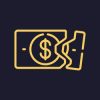
Inflation rate
The inflation rate can have a significant impact on the value of currency and hence the relation or rate it has on the foreign exchange in comparison to other currencies. In most cases big impact is seen only when it comes to the higher inflation rate which means that the currency weakens, especially in comparison to other currencies. However, this effect does not go vice versa. For instance, a very low inflation rate does not guarantee a more favorable exchange rate for the particular country.
The two most important indicators of inflation rate are CPI (Consumer Price Index) or the value of an average consumer goods basket and PPI (Producer Price Index) which refers to the average value/price domestic productions get for their products (i.e. milk producers).
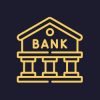
Central Bank Policies
One of the key forex market drivers is the monetary policy which is implemented by the National – Central Bank. Monetary policy refers to the actions usually taken by the Central Bank to control money supply of the nation, hence achieve pricing stability. This is done through interest rate adjustments, regulating forex rates, selling or buying government issued bonds etc. Through monetary policy, a country should achieve stable rise of GDP, lower unemployment rate and keep inflation and forex rates in check.
Demo vs Live Trading
The two main trading account types each forex broker is offering are demo and live trading accounts.
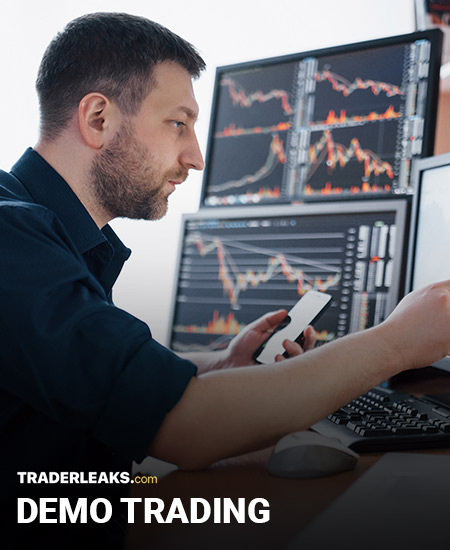
Demo Trading Account
This account type is perfect for aspiring traders who want to try out “the look and feel” of forex trading but in a risk free environment, performing trades with 100% virtual cash. These accounts may be great when it comes to learning the system and getting used to broker’s execution methods. However, it cannot be regarded as “credible”, because it just mimics the real live trading conditions, yet it can never give a completely real experience, especially when it comes to lack of emotional response to potential capital losses. Simply, as traders on demo accounts cannot lose the real money they can make some bold, yet clueless moves which can possibly yield results. However, gains or losses that happen on a demo account cannot be used for real live trading estimations and if done so, the trader is in most cases going to lose all his invested money.
Live Trading Account
Once the trader has tried out various trading strategies on the demo account and experimented with different analysis, indicators etc. he may want to move to opening a Live Account. Sometimes, demo accounts do not really offer the full specter of actual advantages and tools brokers have to offer, hence the real “deal” starts only after opening the real account and activating it by placing at least the minimum deposit required by the broker. At this point, the trader will also need to opt for one of the live trading account types which usually come with different trading conditions (fees, leverage, spreads, minimum deposits etc.). The usual types are standard, advanced and pro.
As we have previously pointed out, if you are an aspiring trader who just passed through the demo experience, we recommend you start practicing on a standard live account using a smaller portion of your deposited money to better manage your risk throughout the learning curve process.
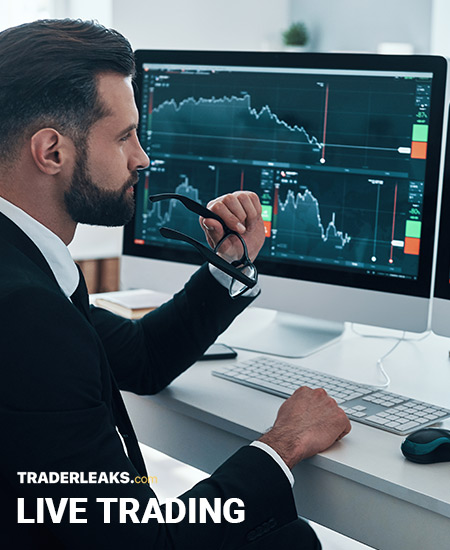
Trading Tools and Software
The FX market has significantly changed with the internet expansion, especially in terms of how trades are being executed. Namely, in the early years of forex, a trader would have to call his broker and make a request for a particular action to be made (buy or sell). Today, however, although actual trading still happens via brokers and usage of their software, traders are able to make their individually via phone, tablet or another device. Indeed, the business model has moved online and evolved but so did the software and trading tools that are on traders’ disposal.
Forex Trading Tools
Trading in the Forex market can be very challenging for both aspiring traders, but also for those with more experience under their belts. Therefore, all traders who actually want to be successful should never make trading decisions based on a hunch, but rather on a proper technical analysis made by using FX Trading Tools.
These technical analysis tools are helping traders to determine their entry and exit points with higher precision and certainty. These tools mostly consist of charting tools which are helping traders by generating signals where to buy and sell, or which are depicting the market trends. Some of the main indicators include:
-
Moving average indicator
which serves the purpose of filtering out the big price fluctuations in order to help traders identify the trend directions. -
Bollinger Bands
which depicts trend lines two standard deviations away from simple moving averages and is used to help traders determine when an asset may be overbought or oversold.
Oscillators which are used to estimate whether an asset is overbought or oversold. The technical indicators in oscillator tools are placed above or below the price chart and they are based on statistical concept). The most commonly used tools of this group are: RSI (Relative Strength Index), MACD (Moving Average Convergence/Divergence) and Stochastic.
Market turning points indicators are also extremely important as they may also be the last “warning“ when the market is expected to shift and where traders should make their moves. The most commonly used tools from this group are: Japanese candlestick patterns, support and resistance, Fibonacci retracement tools etc.
Besides these tools there are also others which are helping traders plan their activities, do proper calculations and go through their trading days easier:
- Economic Calendar
- Profit/Loss Calculator
- Margin Calculator
- Pips Calculator
- Time Zone Converter
- Currency Converter
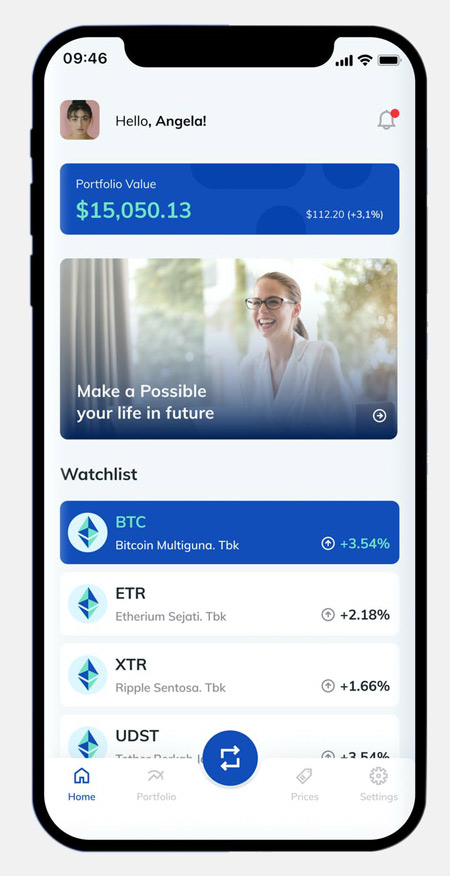
Trading Software
Trading Software or in other words Trading Platforms are the essential “tools” for every trader as this is where the trading “magic” happens. There are many different platforms brokers can offer to their traders, in most cases for free, even their own; however, the most widely known are definitely the MetaTrader4 and MetaTrader5 platforms. In addition to those, rather famous ones are also: cTrader, NinjaTrader, ESignals, ProReal Time etc.
Want to Know More about Forex Trading?
We have prepared many education materials which are presented via different mediums (articles, webinars and videos, e-books etc.). All the materials are absolutely free and here is what you can expect:
Online Trading Education Articles
The purpose of educational articles is to give you a quick overview of the latest market changes, trends and provide more specific lessons.
Forex Glossary
Aims to provide you with an explanation of the key forex and investment terminology which will make the learning process and upgrading your knowledge that much easier.
Certified Education Trading Course
Courses consist of lessons and exams which are taken at the end of each learning section within a course. The 3 main courses are adjusted to current knowledge levels: beginner, intermediate and expert.
Online Trading Videos and Webinars
Our expert traders, financial market analysts and investors are here to provide an invaluable insight into a wide range of forex trading and crypto subjects.
Online Trading E-books
We have covered a range of Online Trading topics which aim to provide you with a strong knowledge foundation.









 Bitcoin
Bitcoin  Ethereum
Ethereum  Tether
Tether  Solana
Solana  USDC
USDC  XRP
XRP  Lido Staked Ether
Lido Staked Ether  Dogecoin
Dogecoin  TRON
TRON